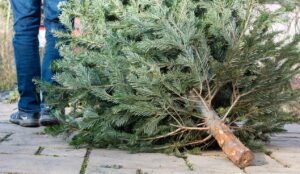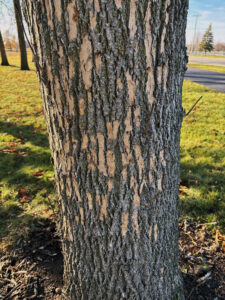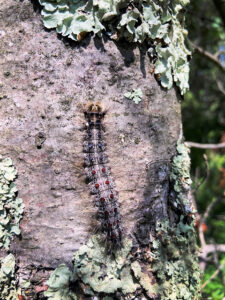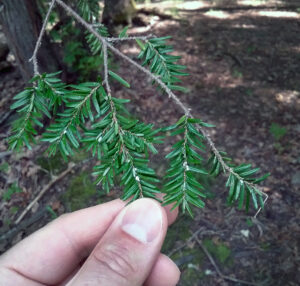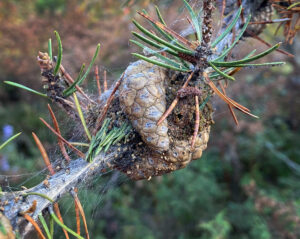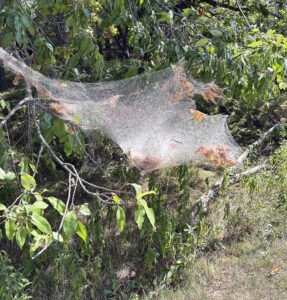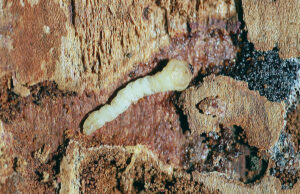
A hemlock borer larva inside channels in a hemlock tree. / Photo Credit: Steven Katovich, Bugwood.org
By Linda Williams, DNR Forest Health Specialist, Woodruff
Linda.Williams@wisconsin.gov or 920-360-0665
Woodpeckers are often the first to know that a hemlock tree is being attacked by hemlock borer.
Woodpeckers will flake off the outer layers of bark to get at the tasty hemlock borer larvae under the bark, leaving the tree with a reddish hue that, once you’ve seen it, is unmistakable. The woodpecker damage quickly makes it obvious that the tree was fully infested from top to bottom by hemlock borer.

